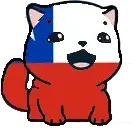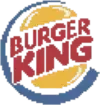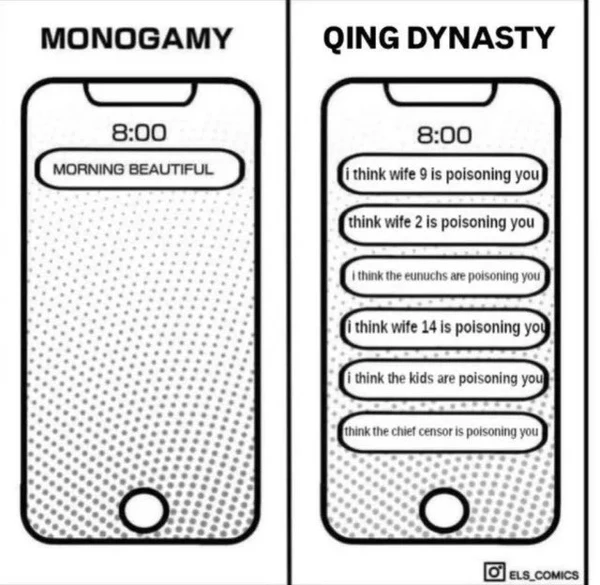weón: slang word from Chile that can mean different things depending on the context. It can be a way of calling someone an idiot, a dumbass, an imbecile, or just plain stupid.

Greetings dramatards, welcome to the intro of the modern History of Chile.
The Republic of Chile is a country in South America, part of a region known as the Southern Cone. Currently Chile has the second highest GDP per capita of South America (second only to Uruguay). It has a population of 19 million inhabitants, most Chilenos are mestizos, and admixture of Spanish settlers and the original peoples, the Mapuches, but the Chilean upper class tends to be heavily european (they had a migration wave from Italy, Britain, France, Spain, Croatia, however it was a fraction of that of Argentina and Brazil), for the chuds here's the genetic composition for your nooticing as I know you're binged into this shit.
Genetics studies fluctuate between 57,8% and 67.9% European;[21][22][23][24] between 32.1% and 44.3% Amerindian;[22][25] and 2.5%—6.3% African ancestry percentages.[26][21] A genetic study by the University of Chile found that the average Chilean's genetic makeup consists of 64% Caucasian and 35% Amerindian ancestry.[27] In a 2014 study of Chilean soldiers stationed in Arica, researchers found that the average self-identifying white person (37.9%) was genetically only 54% European.[28]
Now regardless of that, let's cover other stats. Chile has a poverty rate of 6.5% as of 2022. It has a murder rate of 4.6 per 100k also as of 2022, making it the second safest country in the continent (only behind Argentina). The highest Human Development Index of LATAM (0.856 as of 2021) and is considered a high income country now and part of the OECD. It's economy relies on copper exports but they also have a strong fishing industry, the reliance of commodities was always sort of an issue to them.
In other words, Chile is the closest thing we have to a functional developed country in South America.
Now let's go back to the 1960s. Back then Chile was very different, it was poor, backwards, the outskirts of Santiago were covered by "campamentos", shanty towns with dirty floor and no tap water nor electricity.
Back then, the only countries with actual middle classes in LATAM were Argentina and Uruguay, and we may add some Brazilian states like São Paulo, Rio de Janeiro, Rio Grande do Sul and Paraná. Chile was above neighbors countries like Peru and Bolivia but not by much, and far behind Argentina in terms of infrastructure, GDP, poverty rates, schooling, etc.
How did this country jumped to first place?
(Pic of modern day Santiago)
The story I'll tell on a weekly series of posts will cover the failure of liberal democratic governments, the follow up of a callous and populist marxist government and a brutal military dictatorship which lasted 17 years.
The funny thing about Chile's development is that it's a story with virtually no heroes and many villains. Violent commies beating up farmers and sizing their farms, policemen and the military opening a concentration camp on a Stadium, a nazi and former SS officer along an American CIA probe turned rogue Chilean agent helping black ops, a biochemist producing cocaine and chemical weapons, a murderous and pedophilic kraut cult involved in killings and arms traffic. And a group of upper class young men who graduated from the university of Chicago and found a job at government in the 1980s.
At the center of this all, a totemic figure, the only Latin American dictator whom North Americans know by name;
Augusto José Ramón Pinochet Ugarte, commander of the Chilean army, President of the Junta de Gobierno, and President of the Republic of Chile (1973-1990).
!latinx !historychads !neolibs
Part 1 Next Thursday, it will cover from the Valdivia Earthquake in 1960 all the way to the Allende government, the gentleman who's every international left-winger's darling and who blew his brains out with an AK-47 (I'm not kidding) on the day of the coup.
Also, some Chilenismos !linguistics






 A Brief Introduction to Chile
A Brief Introduction to Chile





 )
)


Jump in the discussion.
No email address required.
I thought the upper class was mostly of aristocratic colonial background (ie noble mestizo) who changed with the times/became industrialists and intermarried with certain immigrant groups (Germans, Basques?)
Jump in the discussion.
No email address required.
The Chilean aristocracy was mostly basque-castilian with very little admixture.
In the 19th and 20th century they intermarried with krauts, bongs and croatians. So the "cuicos" will have surnames like "Errázuriz von Beckendorf" or "Milosevic Larraín"
Jump in the discussion.
No email address required.
Why "basque-Castilian?" I know there were prominent Basque merchants who came to Chile mid 18th century onwards who intermarried into some of the aristocracy but calling the criollos "Castilians" just comes across weird and ahistorical even if their 16th century ancestors came from the Greater Castilian area (ie basically all of Spain other than Aragon and Galicia.)
Jump in the discussion.
No email address required.
https://en.wikipedia.org/wiki/Castilian-Basque_aristocracy
The early Chilean aristocracy was Castilian. The basques arrived in the 18th century and became wealthy merchants, then they married with the Castilian origin families.
Jump in the discussion.
No email address required.
Yeah it just seems the Castilian label is a little ahistorical. Their ancestors were likely Castilian but I doubt they would have seen themselves as such by the time the Basques arrived, probably seeing themselves as either Chileans/chilenos, creoles/criollos or even just Spaniards/espanols since they were still Spanish subjects.
Jump in the discussion.
No email address required.
I think the Castilian was used to differentiate from the basques in the 18th and 19th century. But yes, they would have identified themselves as "españoles" during the colonial era.
In fact, even the mestizos were "españoles" by law (those born in Spain were called "peninsulares") as the casta thing wasn't strict but very fluid. After independence just Chileno, but the basque thing was for certain families to brag about their pedigree, the Larraín for instance.
Jump in the discussion.
No email address required.
That's what I thought. In a lot of places, mestizo and criollo were interchangeable rather than exclusive terms that a lot of people think of them. Also, iirc the castas were also regional and social class based?
Jump in the discussion.
No email address required.
More options
Context
Not contradicting you but I think there some cases where ethnically mestizos, including those who 100% culturally Latinx, were locally classified as Indians/Indios because their communities had local "Indio" rights and jurisdictions back when their ancestors were actually Indians but overtime the community ethnically shifted to be Latinx without the jurisdiction changing to a Spanish/espanol one or being dissolved all together.
Jump in the discussion.
No email address required.
More options
Context
More options
Context
More options
Context
More options
Context
More options
Context
I thought colonial aristocrats had around 10-20% admixture? Don'y a lot of them have Incan nobility and Mapuche longo as some of their ancestors?
Don'y a lot of them have Incan nobility and Mapuche longo as some of their ancestors?
Jump in the discussion.
No email address required.
It's very hard to say. I think the colonial stock families have some of it.
The Piñeras (late President family) had their genealogy traced to Atahualpa apparently.
A genetic study done with people from upper class backgrounds of Santiago scored like 91% European and like 8% indigenous.
Jump in the discussion.
No email address required.
More options
Context
More options
Context
More options
Context
More options
Context